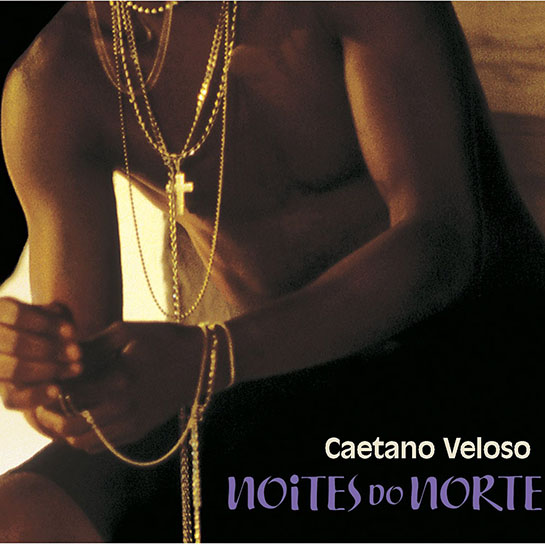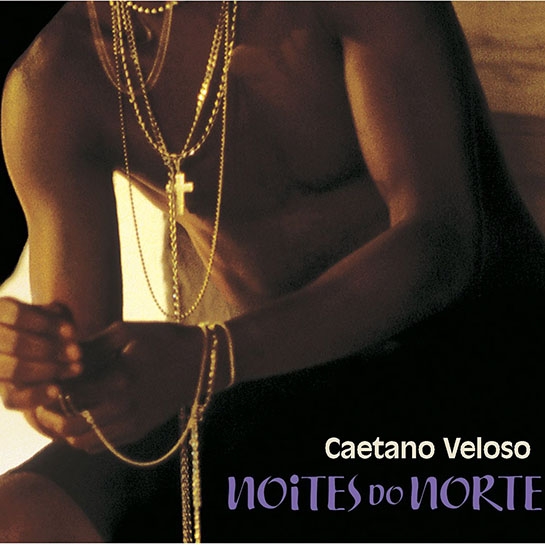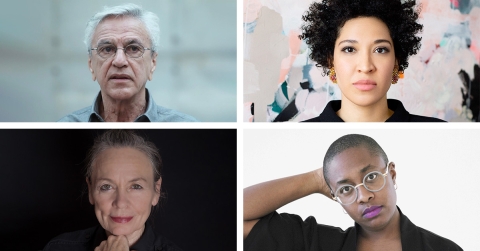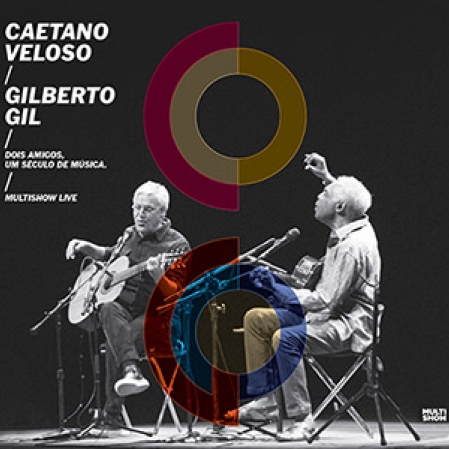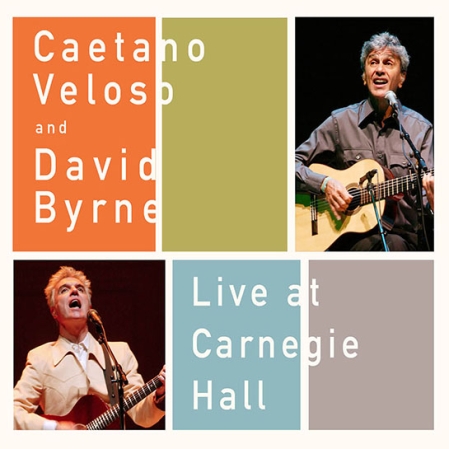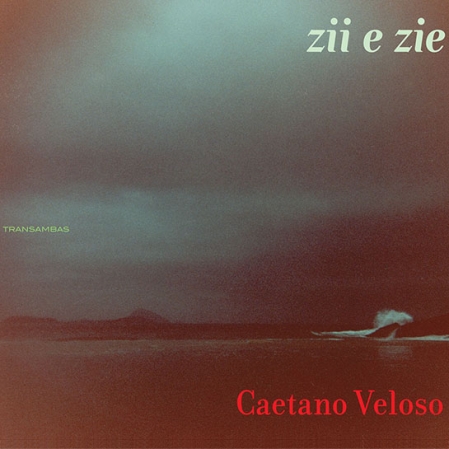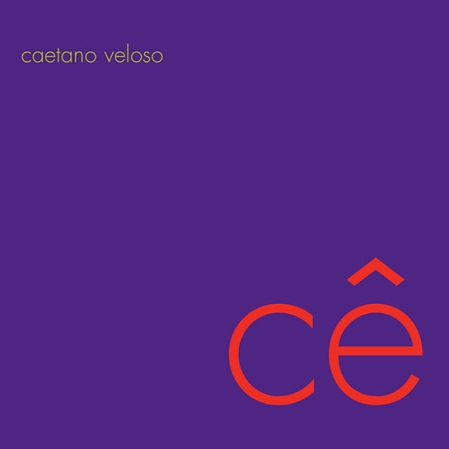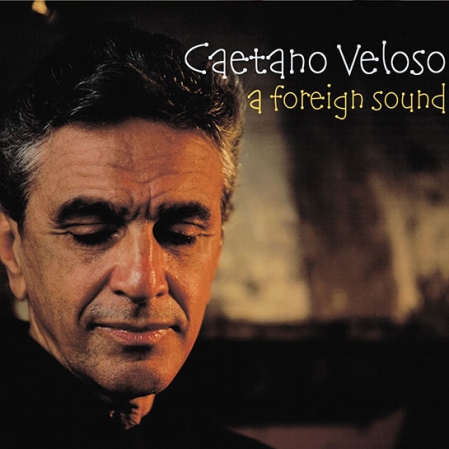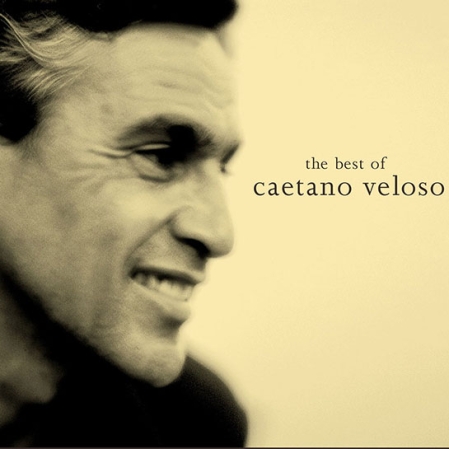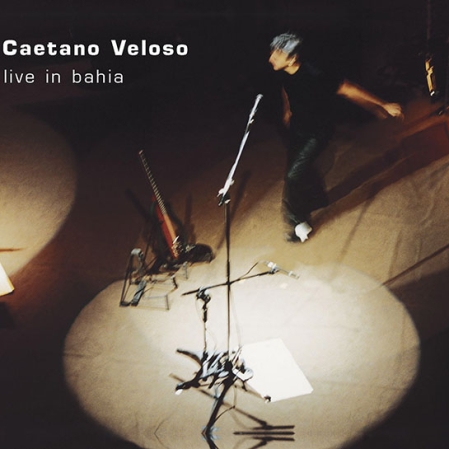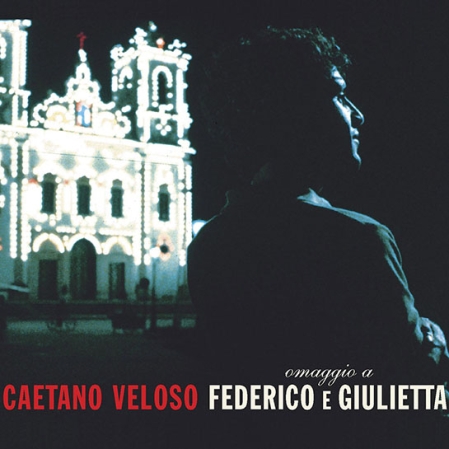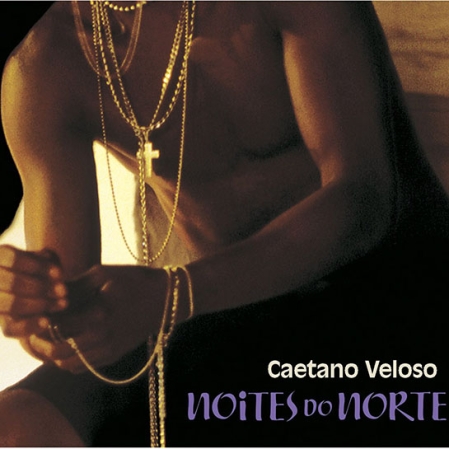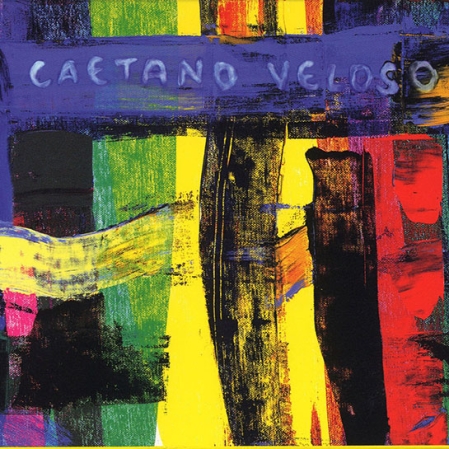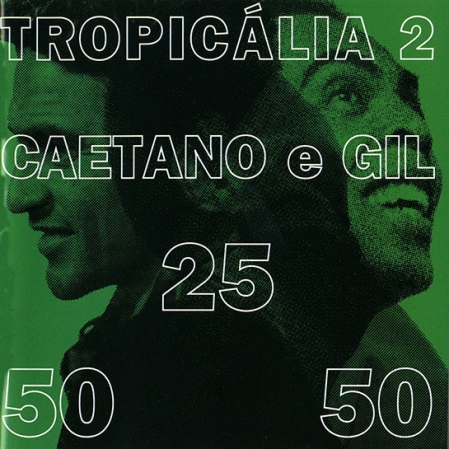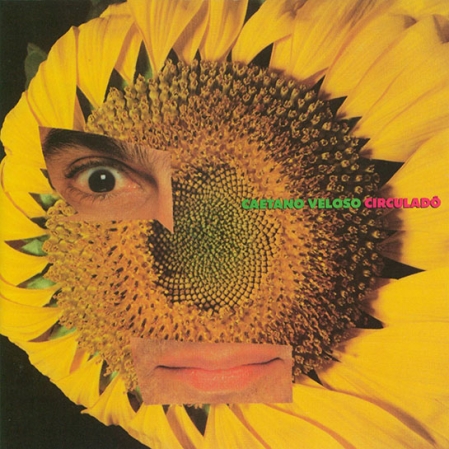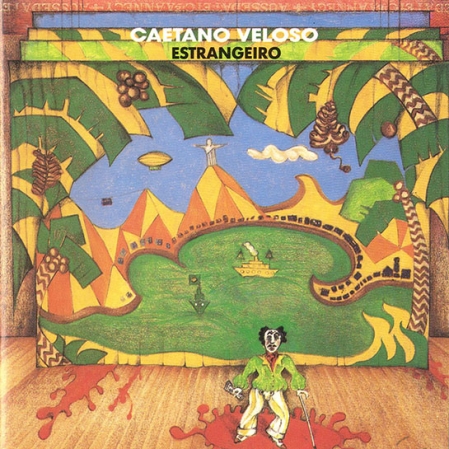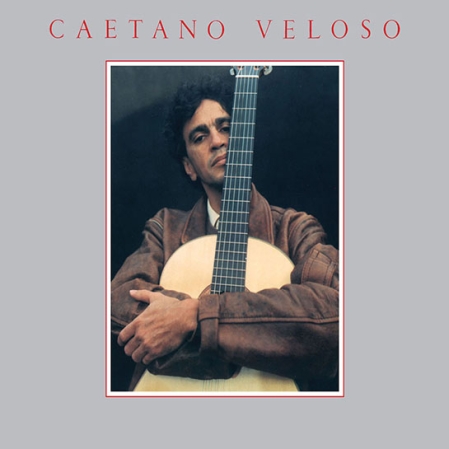On this percussion-driven disc, Brazilian singer-composer Veloso explores the historical/musical African roots of Bahian culture. The New York Times says of this Latin Grammy Award-winning record: "The album moves from songs about slavery to songs about love and Mr. Veloso's musical calling, and they are all entwined."
2001 Latin Grammy Award Winner
Caetano Veloso's Nonesuch CD catalog is now available from the Nonesuch Store; however, free album MP3 downloads, available with other discs in the Store, are not yet included with these CDs.
Noites do Norte (Nights of the North) is inspired by Caetano Veloso's admiration for Joaquin Nabuco, the late 19th-century Brazilian statesman and abolitionist from whose writings the album takes its name. With critical insight, Veloso examines the challenges of maintaining a national identity in a world that takes American culture as its example and critiques the media’s focus on commercialism and sensationalism.
The album also includes two evocative and contrasting homages to his fellow Brazilian music icons. “Rock ’n’ Raul” reflects upon the late rock star Raul Seixas, who made his music in an American style. A rendition of “Zumbi,” the song by fellow Tropicália pioneer Jorge Ben, reminds us of how Veloso and his peers blazed new trails for a uniquely Brazilian popular music. Also included is “Michaelangelo Antonioni,” in tribute to the Italian master of the cinema, for whom Veloso claims to have an artistic debt that he is “continuing to pay off little by little.”
Caetano Veloso comments on each track and the production of the record below:
THE SONGS
Zera a Reza
I was going to make this record and I only thought about the sounds, I did not think about the songs. I went to the studio looking for sounds and I wanted to start with the voice. But since I had a slight flu, I decided to start with "Zera a Reza," which I already wanted to do with overlapping voices. I decided to record first the drums and put the guitar on top. I called Cleber, who is the drummer of the band Afro Reggae, from the Vigário Geral slum, which plays hip-hop. At the time he was 16 years old. I wanted to place a bossa nova / samba guitar on top of the hip-hop.
"Zera a Reza" is a song sort of against religion, with a taste for party. I was influenced some by listening to a record by D'Angelo, who overlaps a number of voices. I’m not musical enough do anything near what he does, but there is the presence of this. I had the desire to mix overlapping voices, a hip-hop drum, and a João Gilberto–type samba guitar.
Noites do Norte
I composed on the acoustic guitar, reading the book. When I saw that I had managed to create a musically coherent piece, containing the text with no cuts, I was very pleased, and I already thought that I wanted the orchestra to come in but subjected to a dialog with some heavy percussion, which creates a tension, contrasting with the orchestra. I also wanted the music to have something of the Brazilian seresta as well as classical music of the 19th century, a little connected to opera. I felt a little of the world of Joaquim Nabuco, a 19th-century Brazilian scholar, and something of Brazilian classical music held as nationalistic.
13 de Maio
Princess Isabel has been overlooked as a historical figure, in the unfolding of abolition. Long ago, she was a figure whose name quickly brought to mind a strong idea, so much so that racists, when they wanted to humiliate a black person, would say, commenting on any act of a black person: “This is the fault of Princess Isabel; the guilty party is Princess Isabel.” It was a manner of speech used often in Brazil.
The blacks of Santo Amaro celebrate abolition still today on May 13, but since the 1970s, that has been changing: greatly influenced by the North American black movement, other blacks put Zumbi in the place of the figure to be venerated by black Brazilians. Princess Isabel’s candle was put out. I agree totally with the elevation of Zumbi to this place, but I always liked Princess Isabel, and this sentiment grew a great deal when I read Joaquim Nabuco, after which I wanted to write a song about the festivities of the blacks of Santo Amaro on May 13.
Before I started to make this record, my son Moreno had just finished making his. I found it so beautiful; the songs as well as the sound engineering. I was impressed with how much he knew about it—I didn’t know that he knew so much—so I asked for his help. "13 de Maio" is a song in 5/4. Moreno did everything: the arrangement, played all the percussion, played the base guitar, asked Davi Moraes to play a guitar solo and still put a surdo in 2 over the 5.
Zumbi
On the record, "Zumbi" comes right after the song about Princess Isabel. This is the only song on the record that is not a composition of mine. It is Jorge Ben’s. Luckily, he is the most re-recorded Brazilian composer, by everyone in Brazil.
"Zumbi" had been an important song to me since it first appeared. It was presented at the show "Phono 73." It was new; we had no idea that that music existed. It was the first time he sang. I was in the audience, and I couldn’t believe it. “Here where the men are”—that was a way to put things! There are also sentences that seem like they were taken out history books, names of countries, from where the Africans were imported to be enslaved. And then there is that scene: “On one side sugar-cane / On the other side the coffee field / In the center the masters sitting, / Watching the harvest of the white cotton being picked by black hands,” giving names to the Brazilian monocultures, all within one landscape. And saying “here where the men are.” At these moments I consider Jorge Ben a great poet.
Then repeated: “I just want to see, I just want to see, I just want to see, when Zumbi arrives.” When he said this, what a marvelous thing. I climbed on stage and placed my head at the feet of Jorge Ben. This placement of the possibility of the arrival of Zumbi in the future ... This is a beautiful thing, because Zumbi has not arrived yet, slavery did not go away yet, abolition has not finished.
Michelangelo Antonioni
I composed the song imagining all the elements of the arrangement, which I gave to Jaquinho Morelenbaum. I wanted it to be that almost minimalist but dynamic orchestra, like we did with "Cucurucucu Paloma" and other things on Fina Estampa; but at a certain moment, at that specific moment like it is on the record, a bass and a vibraphone would enter. Like in the groups of modern jazz in the early '60s and end of the '50s, exactly during the period when I saw the first films by Antonioni. I think it sounds like these films: half jazz, modern jazz quartet.
I wrote the lyrics in Italian, which is a language I barely speak. I wrote few verses so it would be all right. I sent them to Antonioni, so he could tell if he approved. I was quite happy to receive an answer saying that he approved with enthusiasm, and found the Italian fine.
Cantiga do Boi
I had been promising myself to write only songs whose lyrics were direct and very intelligible, that I myself knew what was being said. Nothing like “Qualquer Coisa,” which has a lot of language games, and I don’t know exactly what is being said there.
I know the whole meaning but the text is not explicit, it is not logical. "Cantiga do Boi" appeared to me irresistibly. I went to a show of Margareth Menezes in Salvador during the summer. Before she sang, the group Malê Debalê came out. They all arrived, in this presentation, with a CD tied to their foreheads. The shinny side was turned out, that which is iridescent, where you see the spectrum of light. I was impressed, and I left there thinking that it was like a form of folkloric ornamentation. I remembered some ox of the bumba–meu-boi that had circle shaped mirrors between their horns. I remembered José Miguel Wisnik, his son Guile, and of Vadim who wrote an article about the city and the ox in my songs. There is ox in "Araçá Azul," a song on Tropicália 2.
I said: “My God, this thing coming back because of this vision of Malê Debalê!” But I let it slide. When Carnival arrived, I was watching the blocos afro parade in Campo Grande, and there came Malê Debalê, the whole bloco, thousands of people, all of them with CDs on their foreheads. That moved me so much, that CD and the song started coming out this way. There are some images, some rhymes that I didn’t want to make, internal rhymes, something that aesthetically I wanted to reject but I couldn’t resist, I couldn’t control. I did everything with internal rhymes. It loses the meaning but it keeps the feel.
I ended up making on the recording the most beautiful sound experimentations, with Tamima playing an Australian type horn made of PVC. I also used a sampling of soundtrack of the movie Vidas Secas, the sound of the ox cart going by. I dedicated the song to Zé Miguel, Guile, and Vadim.
Cobra Coral
"Cobra Coral" is a poem by Waly Salomão, which is in his book of poems Tarifa de Embarque. I loved this poem. When I saw it I had the desire to put it to music. I called Lulu Santos and Zélia Duncan to sing it with me. I had also called Marisa Monte, but at the last moment she canceled. In a certain way it was better, because the three voices—mine, Lulu’s, and Zélia’s—sound like those of three men. Zélia can sing really deeply. It is very interesting that Lulu, Zélia, and I together resemble a male choir.
I wrote the arrangement for trumpets. I didn’t write it, because I cannot write music: I dictated all the notes to Luiz Brasil.
Ia
"Ia" is a song that is totally bossa nova: slow, strange, a song of depression, of sadness. I was going to play it only on the acoustic guitar, but after "Rock ’n’ Raul," I had the idea to invite Pedro Sá as well, with the sounds and tones of the rock-and-roll guitar, and Domênico, who at times doubles the tempo of the drums. It seems like you are hearing drum-and-bass at a distance.
Meu Rio
"Meu Rio" is a song about my remembrances of Rio de Janeiro, when I first came to live here when I was 13 years old. I lived one year, 1956, in Guadalupe. This neighborhood was then called Fundação. The house where I lived it is still there, where I go every now and then to see my relatives, my cousins. During this period I would go to the Rádio Nacional to see the singers. I would go to town with Minha Inha, and I would go often to Niterói to swim at the Saco de São Francisco, which was my favorite place to go to the beach. I adore Niterói still today. So, this is a song about Rio, "meu Rio" in the sense that it is the Rio as I saw it. I called Dudu Nobre to play cavaquinho, a totally carioca cavaquinho to fit right into the song.
Sou Seu Sabiá
"Sou Seu Sabiá" is a song I wrote for Marisa Monte. She recorded it, very beautifully, but I wanted to sing it on my record, to expose its melody more. In the place of "Sou Seu Sabiá," I almost sang "Você Não Gosta de Mim," which Gal recorded. There was already "Ia" and "Tempestades Solares," a lot of music that seems to be made by a guy suffering because of love, and it would be one more, too sad. I preferred to record "Sou Seu Sabiá."
Tempestades Solares
"Tempestades Solares" is a song of intimate, amorous drama. Differently from Djavan and Chico Buarque, who have said in interviews that their songs had nothing to do with their lives, to be sincere, I could almost say the opposite: practically all my songs are autobiographical, and I can’t say that "Tempestades Solares" is any different. I got excited about recording it, because I still wanted an opportunity to do what I had first thought about doing on the record, which was to use many vibratos, exaggeratedly, and to get strange sounds from the voice along with the percussion and a few guitars. I asked Luiz Brazil to play in a very flamenco style justifying even more the vibrato.
PRODUCTION OF THE RECORD
At the time of the Outra Banda da Terra, there wasn’t a producer. For Noites do Norte, it was the same, except that I produce more than I produced at that time. I decided more how I wanted things to be. It is a record that is more mine, made more by me. I asked Jaquinho Morelenbaum to help me, while he was in Brazil—he was getting ready to go on tour—on a few tracks, not only with the arrangements but in the studio and on the production as well. He is there as the co-producer on those tracks. My son Moreno helped me on "13 de Maio." Luiz Brasil helped me a lot, with the arrangements, and the choice of tones: he was the musical consultant for the finalization of the record after Jaquinho left for the tour.
I counted a lot on the help from Moreno and Pedro Sá, because they understand a great deal about the technical side of sound engineering. They really understood what I wanted to achieve, and they had suggestions to bring me closer to that, which makes me feel ever more connected to it, as the author of every sound on this record.
PRODUCTION CREDITS
A Universal Music Production
Produced by Caetano Veloso
except tracks 1, 2, 4, 6, 8, 9, 11, co-produced by Jaques Morelenbaum
and track 3, co-produced by Moreno Veloso and Jaques Morelenbaum
Artistic Direction: Max Pierre
Artistic Management: Ricardo Moreira
Musical Supervisor: Luiz Brasil
Executive Supervisor: Conceição Lopes
Executive Coordinator: Beth Araújo
Recorded and mixed at AR Estúdio, Rio de Janeiro
Recorded by Marcelo Sabóia, except tracks 1, 5, recorded by Antônio “Moogie” Canázio
Assistant Engineer: Fernando Fishgold
Additional recording at Estúdio JOÁ (Hammond B3), Rio de Janeiro
Assistant: Fernando Prado
Mixed by Marcelo Sabóia
Mixing concept: Pedro Sá, Moreno Veloso and Mardcelo Saboiá
Assistants: Fernando Fishgold and Leo Moreira
Mastered at Magic Master by Ricardo Garcia
Mastering concept: Pedro Sá, Moreno Veloso and Ricardo Garcia
Additional mastering by Robert C. Ludwig, Gateway Mastering Studios, Portland, ME
All songs by Caetano Veloso, except: 2, music by Caetano Veloso, text by Joaquim Nabuco; 4 by Jorge Ben; 8, music by Caetano Veloso, lyrics by Waly Salomão. Arranged by Caetano Veloso (1, 3 [vocals], 5, 7-12), Jaques Morelenbaum (2, 4, 6, 9, 11), Moreno Veloso (3), Pedro Sá (5, 9), Luiz Brasil (7 [string/brass], 10, 12).
Art Direction: Luiz Zerbini
Design: Ludmila Ayres and Zoy Anastassakis
Photography by Mario Cravo Neto
79631
All formats of this album are available from Nonesuch in the United States only.
MUSICIANS
Caetano Veloso, vocals (1-12), acoustic guitar (1, 8-12), hand clapping (3), chorus (4)
Cleber Sena (AfroReggae), percussion (1)
Marcio Victor, drums/percussion (1-4, 7, 8, 11), horns (7)
Du, drums/percussion (1- 4, 7, 8, 11)
Jó, drums/percussion (1-4, 7, 8, 11)
Paulo Calazans, keyboard (Hammond B3) (1)
Pedro Sá, electric guitar (1, 5, 9), chorus (4), bass (5, 9)
Luiz Brasil, guitars (2, 4, 7, 10, 12), chorus (4), talk box (7), conductor (8)
Moreno Veloso, conga drum, percussion, electric guitar, hand clapping (3); chorus (4); cello (12)
Davi Moraes, electric guitars (3)
Nara Gil, vocals (3)
Belô Veloso, vocals (3)
Paula Morelenbaum, vocals (3)
Jorge Gomes, hand clapping (3), percussion (4)
Fernando Fishgold, hand clapping (3), chorus (4)
César Mendes, chorus (4)
Arthur Maia, bass (4)
Domenico, percussion (5, 9)
Zeca Assumpção, acoustic bass (6)
Jotinha, vibraphone (6)
Marcelo Costa, percussion (7)
Lulu Santos, guest vocals (8), appears courtesy of BMG Brasil
Zélia Duncan, guest vocals (8)
Ronaldo Silva, percussion (8)
Dudu Nobre, special guest (ukelele) (10)
Zeca Assumpção, acoustic bass (11)
Milton Guedes, harmonica (7)
Thamyma, borel (bullroarer) (7)
Chiquinho Chagas, accordion (7)
Armando Marçal, tambour, rattle, tambourine (10)
Orchestra:
Violins: Bernardo Bessler, first; Michel Bessler, José Alves, João Daltro, Ricardo Amado, Antonella Perschi, Walter Hack, Paschoal Perrota (2, 6, 11)
Violas: Marie Springel, Jesuína Passaroto (2, 6, 7, 11); Ricardo Taboada (2, 6, 11)
Cellos: Alceu Reis (2, 6, 11); Marcos Oliveira (2, 6); Marcio Malard (2, 6, 7, 11); Yura Ranevsky (7, 11)
Double Bass: Denner Campolina (2)
Kátia Pierre, flute, piccolo (2, 11)
Andréa Ernest, alto flute, piccolo (2)
David Ganc, alto fltue, piccolo (11)
Carlos Malta, bass flute (2)
Andréa Dias, bass flute, piccolo (11)
Carlos Prazeres, English horn (2), oboe (11)
Lucia Morelenbaum, clarinet (2)
Eduardo Morelenbaum, bass clarinet (2, 7)
Philip Doyle, horns (2)
Ismael Oliveira, horns (2)
Jailson Araújo, flügelhorn (4)
Pedro Paulo, trumpet (4), flügelhorn (8)
Flávio Melo, trumpet (4, 8)
Jessé Sadoc, trumpet (4, 8, 11)
Vittor Santos, trombone (4, 7)
Sergio de Jesus, trombone (4)
Antônio Henrique Bocão, bass trombone (4)
Eliézer Rodrigues, tuba (7)
Paschoal Perrota, musician contractor (2, 4, 6-8, 11)
